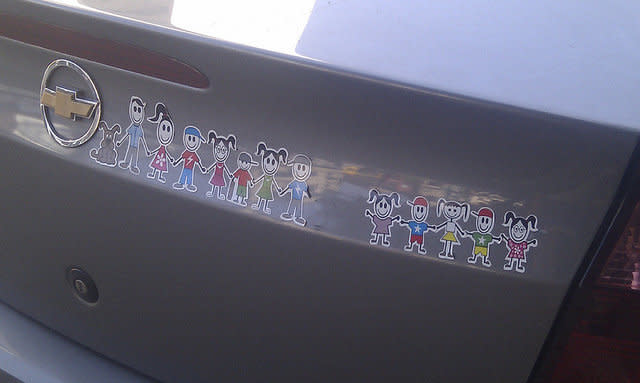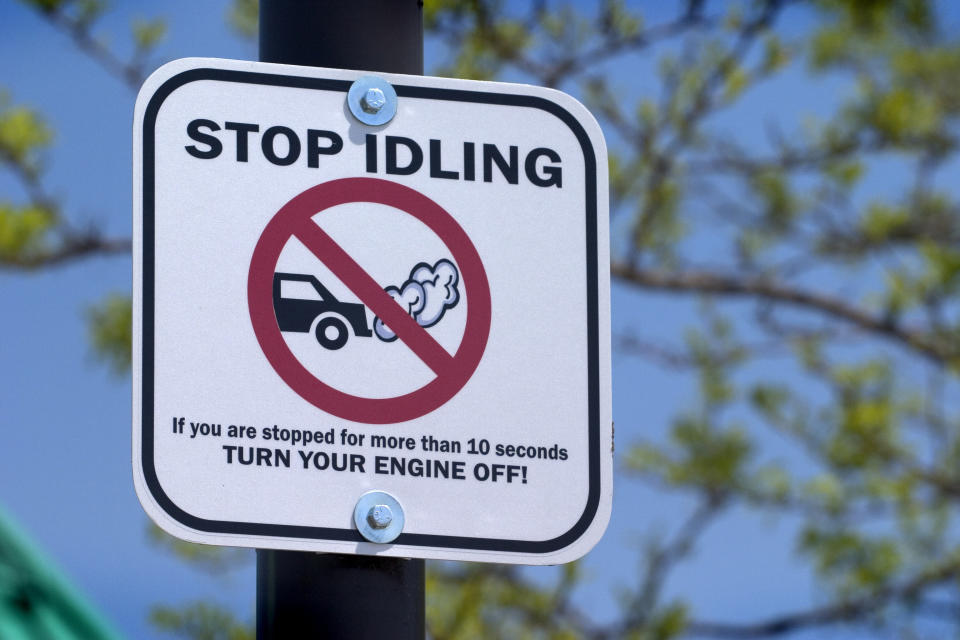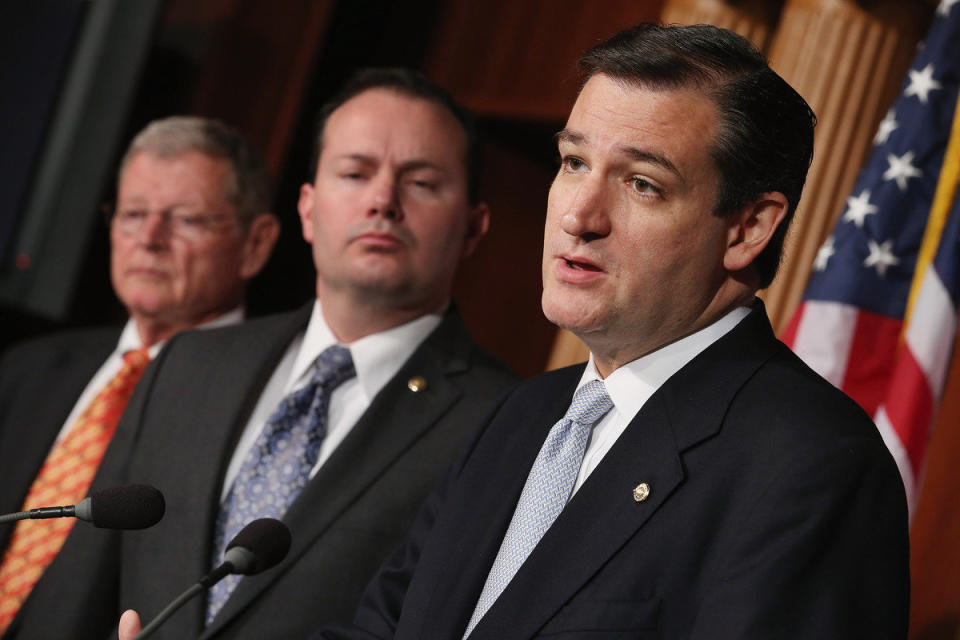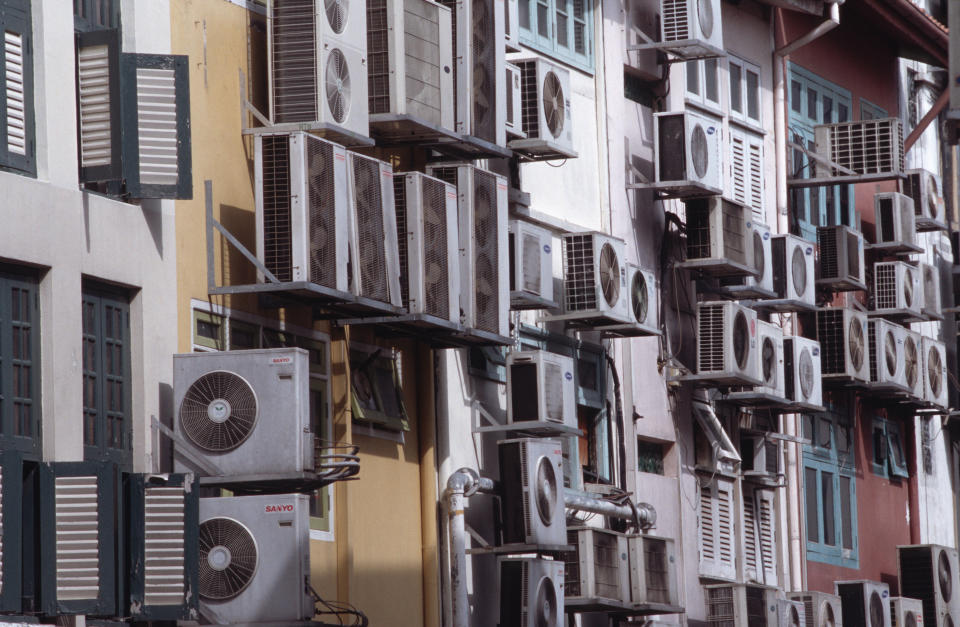Trump’s Pick To Lead Climate Panel Once Compared CO2 To Jews In Nazi Germany
William Happer, President Donald Trump’s reported pick to lead a new panel on climate change, is a science denier with a history of controversial comments.
In one case, he compared carbon to Jews in Nazi Germany.
The Washington Post reported on Wednesday that Happer, a retired Princeton physics professor with no expertise in climatology, will lead a panel called the Presidential Committee on Climate Security.
Happer, however, has claimed rising carbon dioxide levels not only aren’t harmful but also are actually beneficial.
“The demonization of carbon dioxide is just like the demonization of the poor Jews under Hitler,” Happer said on “Squawk Box” on CNBC in 2014. He added: “Carbon dioxide is actually a benefit to the world, and so were the Jews.”
William Happer is set to lead a Trump panel on climate change: https://t.co/KNJKpO4A4t
Happer has previously argued that "the demonization of carbon dioxide is just like the demonization of the poor Jews under Hitler" pic.twitter.com/RzI4794alt— John Whitehouse (@existentialfish) February 20, 2019
Happer, who is on the National Security Council, has a history of dropping Nazi references.
In a 2017 interview with ProPublica, he said the word “denier,” which is applied to people such as himself who reject the overwhelming scientific consensus on climate change, was “carefully chosen to make me look like a Nazi sympathizer.”
He called for “toning down the rhetoric” but moments later dismissed those who accept science by calling them “climate alarmists” who have “complete control of the media” and have “hijacked all the major scientific societies.”
In an interview with The Best Schools, he managed to name-check the Salem witch trials, the French revolution, the Soviet purge and the Nazis in defense of those such as himself.
And in 2009, he called climate science a “cult” and said that carbon dioxide is not a pollutant. Then he dropped another Nazi comparison to those who believe in the science of climate change.
“This is George Orwell. This is ‘’The Germans are the master race. The Jews are the scum of the earth,’” he said. “It’s that kind of propaganda.”
Happer’s new panel will determine whether climate change is a national security threat, the newspaper reported.
However, the Pentagon has already issued a major report detailing just that.
“The effects of a changing climate are a national security issue with potential impacts to Department of Defense missions, operational plans, and installations,” according to a 22-page document released in January.
Also on HuffPost
Not Driving A Big Car All Over The Place By Yourself

In 2011, the transportation sector ranked as the second-largest greenhouse gas emitter in the U.S. (behind electricity) -- responsible for 28% of emissions. Cars and small trucks contributed to roughly two-thirds of that total, according to the Union of Concerned Scientists.
Driving 600 miles individually, for example, will emit about 500 pounds of carbon dioxide, while carpooling or a taking a train could reduce individual emissions to about 110 pounds of CO2, according to a study in Environmental Science and Technology.
(For the record, driving has a longer lasting environmental impact than flying, according to the International Institute for Applied System Analysis.)
What you can do: Try carpooling, biking or riding public transportation as an alternate option.
(Photo by Paul Moseley/Fort Worth Star-Telegram/MCT via Getty Images)
Not Having Lots Of Kids

An Oregon State University study suggests that one of the most impactful ways of reducing your footprint is to have fewer children. According to the study’s press release, even after taking green initiatives like driving a fuel-efficient car, recycling and using energy-saving appliances, having one less kid would have 20 times of a greater environmental impact. And, the study points out, the magnitude of one's carbon footprint is related to the lifestyle of one's nation. For example, American children have 160 times the impact of Bangladeshi children.
Not surprisingly, a population of such magnitude puts enormous strains on the planet’s natural resources. “Those are important issues and it’s essential that they should be considered. But an added challenge facing us is continuing population growth and increasing global consumption of resources,” said Paul Murtaugh, an OSU professor of statistics, in the press release.
What you can do: Consider the environmental impact of having children, but we understand this isn't going to be on the top of most people's family planning criteria. Instead, you can practice green initiatives and educate your children on sustainable living.
(Photo by Mark Hillary/Flickr Creative Commons)
Don't Idle Your Car

For every hour spent idling your car, you’re not only wasting a quarter to half a gallon of gas, but also emitting six pounds of carbon dioxide, by EDF estimates. Slate reports that if every American driver reduced their idling time by ten minutes a day, we’d eliminate 15.48 million metric tons of CO2 emissions per year.
The EDF recommends reducing idling to under ten seconds when possible, and warming up your car and engine by driving it rather than letting it run. Taking these tips into consideration would save you $70 to $650 a year on gas.
What you can do: Avoid frequent braking, use cruise control when possible and keep your car off as much as possible. Investing in a gadget like Automatic, for example, gives feedback on your personal driving skills and provides tips on greater fuel efficiency.
(Photo by tillsonburg via Getty Images)
Don't Eat Lots Of Meat
![Though American meat consumption has been <a href="http://switchboard.nrdc.org/blogs/slyutse/eat_your_vegetables_no_wait_do.html" target="_blank">declining since 2007</a>, we still rank as the <a href="http://www.huffingtonpost.com/2012/05/03/world-meat-consumption_n_1475760.html" target="_blank">second-largest nation of meat consumers per capita</a>, just behind Luxembourg. It turns out that our carnivorous appetites carry quite the environmental footprint. <br></br> Agriculture is <a href="http://www.epa.gov/climatechange/ghgemissions/sources/transportation.html" target="_blank">responsible for eight percent</a> of U.S. greenhouse gas emissions, and livestock production -- including feeding, processing and transport -- is the biggest greenhouse gas contributor in that sector. In fact, the <a href="http://switchboard.nrdc.org/blogs/slyutse/eat_your_vegetables_no_wait_do.html" target="_blank">Natural Resources Defense Council</a> (NRDC) estimates that U.S. livestock production alone contributes [up] to 18 percent of global greenhouse gases. Additionally, Food and Water Watch says that livestock production is the <a href="http://documents.foodandwaterwatch.org/doc/FactoryFarmNation-web.pdf" target="_blank">highest emitter of methane</a>, a greenhouse gas <a href="http://static.ewg.org/reports/2011/meateaters/pdf/ewg_meat_eaters_guide_to_health_and_climate_2011.pdf" target="_blank">25 percent more potent</a> than CO2. <a href="http://static.ewg.org/reports/2011/meateaters/pdf/ewg_meat_eaters_guide_to_health_and_climate_2011.pdf" target="_blank">The Environmental Working Group</a> also points out that if you cut out just one sizzling burger out of your diet per week for a year, for example, it would be like taking your car off the road for 320 miles. <br></br> <em>What you can do: <a href="http://www.nrdc.org/living/eatingwell/top-10-reasons-eat-grass-fed-meat.asp" target="_blank">NRDC notes</a> that some meat types carry less of a production footprint cost than others and that it’s advantageous to switch to grass fed, CAFO-free meat. Meat-eaters can also partake in Meatless Monday. </em> <br></br> (Photo by Junko Kimura/Bloomberg via Getty Images)](https://s.yimg.com/ny/api/res/1.2/Ma3EcE.Ee7fVPsMu80zLeA--/YXBwaWQ9aGlnaGxhbmRlcjt3PTk2MA--/https://img.huffingtonpost.com/asset/5bb14c60210000e700c72bc8.jpg)
Agriculture is responsible for eight percent of U.S. greenhouse gas emissions, and livestock production -- including feeding, processing and transport -- is the biggest greenhouse gas contributor in that sector. In fact, the Natural Resources Defense Council (NRDC) estimates that U.S. livestock production alone contributes [up] to 18 percent of global greenhouse gases. Additionally, Food and Water Watch says that livestock production is the highest emitter of methane, a greenhouse gas 25 percent more potent than CO2. The Environmental Working Group also points out that if you cut out just one sizzling burger out of your diet per week for a year, for example, it would be like taking your car off the road for 320 miles.
What you can do: NRDC notes that some meat types carry less of a production footprint cost than others and that it’s advantageous to switch to grass fed, CAFO-free meat. Meat-eaters can also partake in Meatless Monday.
(Photo by Junko Kimura/Bloomberg via Getty Images)
Don't Vote for Climate Change-Denying And Pro-Oil Representatives

Sen. Marco Rubio (R-Fla.), a politician infamous for his climate change denial, told "Fox and Friends" earlier this year that the government couldn’t do anything to reverse climate change. Unfortunately, Florida will be one of the most susceptible to sea level rise, and his political views could prevent adequate preventative measures from being taken. And in North Carolina, for example, the N.C. Department of Environment and Natural Resources declined two grants from the EPA that they once petitioned for, now that NCDENR was under new leadership appointed by Governor Pat McCrory. These grants would have been crucial for wetlands and water quality monitoring near potential fracking sites.
And for those politicians and other folks that still deny climate change, only 24 out of 13,950 peer-reviewed climate articles published between 1991 and 2012 have rejected the basic idea of human-caused global warming. The other 13,926 papers affirm that global warming is a real and imminent threat.
What you can do: Vote for politicians who believe climate change is a real threat and pledge to take action, support environmental groups making a difference and practice being green in your daily life. (Additionally, you can check out this mock video by ClimateNameChange to get climate change-denying politicians to take the issue seriously).
(Photo by Chip Somodevilla/Getty Images)
Don't Take A Really Long Shower

Quantifying water use by showering is hard to do, notes the Alliance, because it depends on the flow rate of showerheads and shower duration -- and that’s different for each person. The Guardian points out a few statistics from the Shower Power Campaign: People take shorter showers with age, and men and women have more similar showering habits than one would expect. Seventy-one percent of women take ten minute and under showers, just a bit less than the 75 percent of men who do so.
What about the bath versus shower debate? The average bath uses 21 gallons of water, while the average showerhead sprays one-and-a-half gallons a minute. So, if you take long showers, they’re neck and neck. By the way, washing your hands at really hot temperatures not only has an over-hyped benefit of killing germs, according to research from Vanderbilt University, but it's also really bad for the environment. According to the study's press release, "If Americans could be persuaded en masse to use a comfortable water temperature when washing their hands, it could prevent the annual greenhouse gas emissions totaling the equivalent of the United States’ lead industry or the entire output of a small nation such as Barbados."
What you can do: Besides reducing shower time (try avoiding waiting for the water to heat up), American Standard recommends turning the water off when brushing your teeth, flushing the toilet less often and taking fewer baths and showers. The Department of Energy also has tips on ensuring water heaters and appliances are as efficient as possible, and the U.S. Geological Survey has a tool where you can calculate your personal water use and learn where to cut back.
(Photo by Nicholas via Getty Images)
Avoid Buying Things From China

Once goods are produced, they’re often distributed through shipping. Though the environmental impact of shipping has been downplayed for years, emissions from the shipping industry are responsible for about 4.5 percent of global CO2 emissions according to a UN report leaked to the Guardian.
Additionally, conditions at Chinese factories are notoriously poor and violate labor laws. In 2010, Chinese companies that supply to Microsoft were cited for violations, and Apple has also been accused of taking advantage of labor.
What you can do: Buy local, purchase hand-made items and support Small Business Saturday. (USA Today reports that research from the Federal Reserve Bank of San Francisco reveals that only 2.7 percent of U.S. consumer spending goes to Chinese goods, so we recognize that buying goods from China is not going to make or break your environmental footprint).
(Photo by DAMIEN MEYER/AFP/Getty Images)
Stop Wasting Paper

Thirty-five percent of trees cut globally are for the paper industry, says Ecology, and 46-58 million square miles of forests are lost each year. This deforestation accounts for about fifteen percent of greenhouse gas emissions, according to the World Wildlife Fund, and displaces animals and humans that rely on forest ecosystems. The pulp and paper industry ranks as the tenth-highest greenhouse gas emitter in 2012, as reported by the EPA.
What you can do: Plant trees (more than 2.3 billion are already planted in the U.S. each year), avoid using paper towels (they’re often not recyclable) and reduce, reuse and recycle paper.
(Photo by Matti Mattila/Flickr Creative Commons)
Avoid Flying Across The Country Multiple Times A Year

If you flew from New York to San Francisco, you and fellow passengers would account for about two or three tons of carbon dioxide each, the New York Times calculates. Because the average American creates about 19 tons of CO2 per year, one round trip flight is about 15 percent of your yearly footprint. Air travel is only expected to grow over the next 20 years.
Because aircraft carbon dioxide emissions are deposited into the upper atmosphere, they’re especially potent. They linger much longer and CO2 combined with other emissions from aircraft could affect the atmosphere 2 to 4 times more than CO2 does alone, notes a report by the U.S. Government Accountability Office. That study also states that about 3.5 percent of global emissions are from aviation.
What you can do: Choose a nonstop flight (take offs and landings burn the most fuel), avoid unnecessary air travel and take trains and buses when possible. Many internet resources like Google Hangouts, WebEx and Join.Me are great resources to hold meetings virtually, thereby reducing the need to fly cross-country for a day for a quick meeting.
(Photo by David McNew/Getty Images)
Don't Waste Food

Half of American land use and 80 percent of the nation’s water use go to agriculture, but only 60 percent of produced food gets eaten, according to “Wasted,” a report by the Natural Resources Defense Council. The decomposition of our uneaten food is responsible for 23 percent of the United States’ methane emissions.
Chucking that much food is the equivalent of throwing out 165 billion dollars a year. That’s a hefty sum, since one in six Americans lack an adequate food supply and reducing our food waste by just 15 percent could feed 25 million Americans annually, writes Dana Gunders, a staff scientist at NRDC and author of the report.
When food is such a precious commodity, why do we waste that much? A recent report by Harvard Food Law and Policy Clinic and NRDC reveals that nine out of ten Americans pitch food because of date labels. Many of the sell by, use by and best by dates are actually labels meant for communication among grocery stores for stock rotation or for peak quality -- and don’t indicate food spoilage. The lack of a cohesive federal labeling system has fueled much of this variability and confusion.
What you can do: Only buy what you can eat, freeze food to promote food longevity, donate excess food and learn the labels. NRDC also offers a neat infographic on optimizing food storage in your refrigerator.
(Photo by Luis Robayo/AFP/Getty Images)
Quit Eating Out Of Season

Oranges grown in California and transported to Australia, for example, travel 7,456 miles by ship or plane, states Environment Victoria, a leading environmental group in Australia. And a report by NRDC reveals that in California, for example, importing fruits, nuts and vegetables by plane released 70,000 tons of CO2 in 2005, equal to the emissions of 12,000 cars. NRDC estimates that a typical American meal contains at least five ingredients that stem from other countries.
(NRDC states that cherries, blueberries, blackberries, raspberries, tomatoes, bell peppers and asparagus travel most frequently by air.)
What you can do: Stock up on produce at farmers markets (visit localharvest.org to find your nearest one), freeze and can produce between seasons and learn which fruits and veggies are in season in your state. Bon Appetit also offers a “Food Scores” quiz to determine the carbon footprint of your meal.
(Photo by Stephen Chernin/Getty Images)
Stop Using As Much Electricity And Unplug When Possible

Slate gathers that charging your phone or iPad overnight isn’t going to be the energy-consuming devil that we may think it is -- charging it overnight for a year would only use 6.5 kWh of electricity. Instead, refrigerators, humidifiers, water heaters and heating and cooling systems are the top-five big guzzlers. The average American house has 40 products on “standby” electric use at a time -- products that can’t be turned fully off without unplugging them, like microwaves and landline phones. These objects account for about ten percent of residential electricity use.
Electricity (including its generation, transmission and distribution) is responsible for one-third of U.S. greenhouse gas emissions, according to the EPA. Seventy percent of electricity generation is from burning fossil fuels: coal, oil and natural gas.
What you can do: Invest in energy efficient appliances, keep lights off and electronics unplugged when possible and invest in power strips, allowing you to turn off a group of electronics when not in use.
(Photo by Matt Cardy/Getty Images)
Cut Back On Air Conditioner Use

Air conditioner use, says National Geographic, results in 100 million tons of CO2 emissions per year… ouch. “Air-conditioners draw copious electricity, and deliver a double whammy in terms of climate change, since both the electricity they use and the coolants they contain result in planet-warming emissions,” writes Elisabeth Rosenthal of the New York Times. Though CFCs and HCFCs, two ozone-depleting agents, are now banned in many developed countries, developing nations can use HCFCs in air conditioners until 2040.
Dirty filters on air conditioners allow pesticides, allergens and other particulate matter to enter the home, which can trigger asthma and eye, nose and throat irritation.
What you can do: Wear lighter clothes during the summer, turn the temperature up by a few degrees and invest in updated and alternate technologies other than typical AC systems. Lifehacker also provides extensive tools and tricks for keeping your home cool.
(Photo by Yvan Cohen/LightRocket via Getty Images)
Don't Worsen America's Dog Obsession

Dogs can carry other environmental implications, too: chemicals in flea and tick treatments can pose great risks to humans, and dog poop can get carried as runoff and contaminate waterways, suggests CNN. America’s 73 million dogs produce about 10 million tons of poop per year, writes SF Gate.
What you can do: Don't give up your pooch! Dogs are obviously beloved members of the family and there are sustainable ways to raise them. Try creating your own dog food or buying it locally, use eco-friendly products on your dog and consider pet population control options, like spaying or neutering.
(Photo by Bulent Kilic/AFP/Getty Images)
Seal Up Your House

In fact, sealing your home could save you 20 percent on heating and cooling costs, says the EPA, and you could save five-to-thirty percent of energy produced just by caulking, weather stripping and insulating your home.
What You Can Do: Check out the Department of Energy’s instructions for detecting leaks and drafts and tips for sealing your home and properly cooling and heating it.
(Photo by Mark Levisay/Flickr Creative Commons)
Love HuffPost? Become a founding member of HuffPost Plus today.
This article originally appeared on HuffPost.

